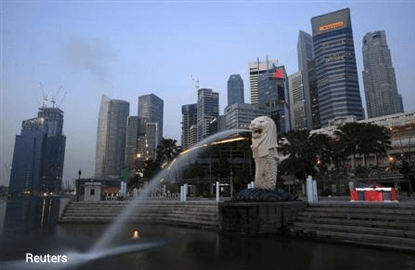
SINGAPORE (June 9): The ASEAN region has shown “impressive” productivity performance throughout the region over the past couple of decades, with its high-income economies delivering competitive results by the standards of comparable economies elsewhere.
This was one of the main findings released by The Institute of Chartered Accountants in England and Wales (ICAEW) in its 2Q Economic Insight: South East Asia, a quarterly forecast which is produced with Oxford Economics.
Overall, ASEAN workers have increased their productivity by 3% per year over the last 15 years.
Among its findings, ICAEW has noted that:
1. Singapore ‘comfortably’ outperformed its peers
Singapore has leapt 1.9% in terms of pure productivity, which refers to improvements in productivity levels within sectors. And that the nation has comfortably outperformed other high-income economies in terms of percentage growth, says Priyanka Kishore, ICAEW Economic Advisor & Oxford Economics Lead Asia Analyst, in a press release on Wednesday.
“We anticipate that output per worker growth should register around 1.5-2% per annum in the coming years, a relatively impressive performance by the standards of other economies with similar levels of GDP per head,” she says.
2. … But sectoral shifts accounted for a drop of 0.2%
This modest negative contribution of sectoral shift to productivity is possibly due to the loss of lower value-added manufacturing sectors and redeployment of workers from such sectors into services. Sectoral shifts have much less impact in higher-income economies such as Singapore and Malaysia, who have already shifted their economies away from agriculture – whereas Indonesia and the Philippines are only beginning to do so in recent years.
3. Productivity supported by workers of ‘prime age’
The study finds that an increase in a population of ‘prime age’ workers, referring to employees of working age within the general age bracket of 25-54, has supported productivity growth in some economies. In Singapore, median monthly wages peak in the 35-44 age brackets to support this perspective that ‘prime age’ workers are more valued for their greater experience and skill levels than younger workers, but less susceptibility to health problems than more senior age groups. However, ICAEW points out that Singapore’s rapidly-ageing workforce is not to be ignored, as ‘prime age’ workers are soon to transition into older cohorts.
4. High household savings play a part
According to the World Bank’s World Development Indicators, 40-60% of households in ASEAN economies saved money in 2011. High household savings is a likely factor for productivity improvements in Singapore, as it are likely to be a source of stable financial supply for investments in both physical and human capital, especially in job-rich small and medium-sized enterprises. Such businesses draw the bulk of their investment financing from domestic savings and lending, although Foreign Direct Investments continue to play an important role in growing ASEAN economies.
5. Maintaining a competitive edge is crucial
Even though there was a significant improvement in productivity levels, Singapore should not be resting on its laurels. Its local economy has been forecasted to struggle in the near term, after being hit from the prolonged downturn in the global trade as well as competition with other emerging economies. However, ICAEW adds that it will remain strong due to its acceleration of government-related services and robust household spending.
Deterioration in Singapore’s manufacturing conditions all the more places emphasis on the country’s reliance on the services sector, and “high-value sectors like professional services and high-tech engineering,” according to Mark Billington, Regional Director of ICAEW South East Asia. “Training, development and skills upgrading must continue an essential role if Singapore wants to maintain its competitive edge,” says Billington.
Despite strong foundations for the ASEAN region, ICAEW says the immediate outlook is more clouded with weak global trade and mixed blessings due to lower oil prices.
External conditions are only expected to improve gradually through 2016-17, while monetary fiscal easing will be limited, says the institute, which has forecast a mild acceleration of overall GDP growth in the ASEAN-6, specifically 4.4% in 2015 to 4.5% in 2016 and 4.8% in 2017, compared to annual average growth of 5.2% between 2005-2015.